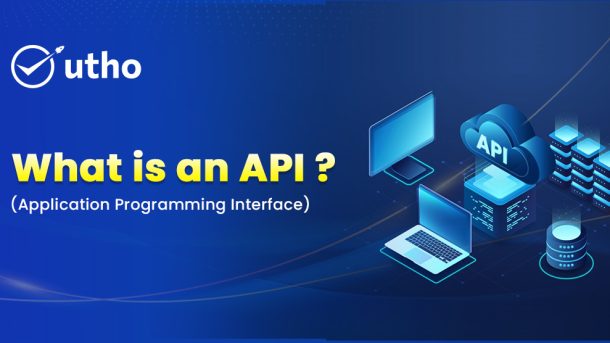In today’s connected digital world, devices like smartphones and smart fridges talk to each other. APIs (Application Programming Interfaces) work quietly behind the scenes to make this happen.
An API is involved when you book a flight, pay with UPI, check the weather on your phone, or log into an app with Google or Facebook. It’s the invisible layer that allows applications, platforms, and devices to “talk” to each other. APIs are now the core of modern software design. They let systems talk to each other easily and safely, without showing the complicated details inside.
But what exactly is an API? Why are they considered the unsung heroes of the tech world?
And how do they impact everything from mobile apps to enterprise systems?
This guide covers everything you need to know about APIs. It begins with the basics. Then, it gives real-world examples, types of APIs, how they work, and why developers and businesses rely on them today. This blog is for everyone. If you're a curious beginner, a new developer, or a business leader, you'll find clear and useful insights about APIs here.
Breaking It Down: What Exactly Is an API and Why It Matters in Tech Communication
An API (Application Programming Interface) is like a digital messenger that enables different software systems to talk to each other. API Full form, as mentioned earlier, stands for Application Programming Interface—a term that defines a structured way for systems to request and share data.
Imagine you're at a restaurant—you (the user) place your order through a waiter (the API), who then communicates with the kitchen (the system), and finally brings your food (the data) back to your table. The waiter doesn’t cook the food or decide what’s on the menu—they just deliver requests and responses efficiently. That’s exactly how an API works in software systems.
From a technical perspective, what is API in software? It’s a set of rules, protocols, and tools that define how two applications interact. It standardizes how requests are sent, how data is formatted, and how responses are received—ensuring seamless communication between systems without the need to understand each other’s internal workings.
Why APIs Are the Unsung Heroes of Modern Software Development
APIs are more than just connectors—they’re critical enablers of efficiency, scalability, and innovation in today’s digital ecosystems. Here’s why they matter so much:
- Seamless Integration Across Systems: APIs allow different applications to integrate effortlessly. For instance, when your UPI app pulls your account balance or transaction history from your bank’s servers, it does so using APIs. In fact, to really appreciate that process, it’s essential to ask What is API in that context.
- Development Efficiency and Speed: APIs help developers save time by letting them plug into existing services instead of building everything from scratch. Need maps in your app? Use the Google Maps API. Need a payment gateway? Use Razorpay or Stripe’s API. This is where the API Full form becomes practical—it’s an interface that saves time and effort.
- Modularity for Better Scalability: APIs support modular development. Different teams can work on different modules of a large system—each communicating via APIs. This makes it easier to scale, update, or replace individual components without affecting the entire system.
- Powering Innovation Through Openness: Open APIs allow third-party developers to build entirely new applications or services on top of existing platforms. This has given rise to entire industries like fintech, edtech, and travel tech, which rely heavily on API-powered ecosystems.
How Does an API Actually Work?
APIs might seem complex on the surface, but their underlying mechanism is quite logical once broken down. At the heart of every API interaction lies a communication model between a client (the one who sends a request) and a server (the one who responds). The key to understanding What is API lies in the flow between these two ends.
The Request-Response Cycle: How Communication Happens
Think of API communication as a structured dialogue. Here’s how it flows:
- Client Sends a Request:
When you use an application—say, searching for weather updates—the app (acting as a client) sends a request to a remote server through an API. This request hits a specific address on the web, known as an endpoint.
- Server Processes the Request:
The server receiving this request evaluates it. It might check for valid credentials, retrieve data from a database, perform calculations, or pass the request to another service if needed.
- Response is Sent Back to the Client:
After processing, the server sends back a response. This response usually comes in lightweight data formats like JSON or XML. The client application receives this data and presents it to the user in a readable or visual format.
This process, the core of API logic, is essential in explaining both API Full form and function.
Key Components of an API Request
For every successful API interaction, several critical elements must work in harmony. Let’s look at the four main components of an API call:
- Endpoint:
This is the unique URL that acts as the access point for a specific function in the API. For example, https://api.example.com/user/profile could be an endpoint to fetch user profile details.
- Method:
APIs typically use HTTP methods to specify what kind of operation the client wants to perform. The most common ones include:
- GET – Retrieve data
- POST – Submit new data
- PUT – Update existing data
- DELETE – Remove data
- GET – Retrieve data
- Headers:
These are like identity cards or instructions added to a request. They can carry metadata such as authentication tokens, content types (like JSON), or caching details. Headers ensure that the request is handled correctly and securely.
- Body:
This is the actual payload of data being sent with the request—mainly in POST or PUT methods. For example, when registering a new user, the body may contain name, email, and password.
Together, these components help you fully grasp What is API design and usage.
Types of APIs
APIs come in different types based on their purpose, audience, and level of accessibility. Understanding these types helps businesses and developers choose the right integration model for their use case.
Open APIs (Public APIs)
Used openly by external developers. Great examples include weather APIs, Google Maps, and login APIs. These make it easy to understand API Full form and real-world use cases.
Example: Google Maps API lets developers embed maps or location features in their apps. Twitter API allows third-party tools to interact with Twitter data.
Internal APIs (Private APIs)
Internal APIs are used only within an organization. They are not exposed to external users and are designed to improve efficiency, enable team collaboration, and support internal tools or systems.
Example: A private API might connect an internal HR system to a payroll application.
Partner APIs
Partner APIs are shared externally but only with specific business partners. These are often governed by strict contracts or agreements. They’re commonly used for business-to-business (B2B) integrations where controlled and secure access is required.
Example: A logistics platform may provide its API to selected e-commerce partners for real-time order tracking.
Composite APIs
Composite APIs bundle multiple API calls into one. Instead of making several requests to different endpoints, a composite API allows the client to get everything in a single response. This reduces network load and improves performance. Each of these types reflects a unique purpose, reinforcing the versatility behind the concept of What is API.
Web APIs vs. Traditional APIs
APIs have evolved over the years. While web APIs are dominant today, traditional APIs still play a key role in legacy systems.
Web APIs
Web APIs use standard web protocols like HTTP/HTTPS to allow systems to communicate over the internet. They’re platform-independent and form the backbone of modern applications.
Common examples: REST and SOAP APIs used in mobile apps, websites, and cloud platforms.
Traditional APIs
These are older forms of APIs, often integrated at the OS or software library level. They run within desktop or server environments and aren’t typically accessed over the internet.
As you explore more, knowing the API Full form helps in distinguishing between legacy and modern implementations.
REST vs. SOAP vs. GraphQL
Different architectural styles define how APIs are structured and consumed. Here’s how REST, SOAP, and GraphQL compare:
REST (Representational State Transfer)
- Most commonly used style for web APIs
- Stateless and lightweight
- Uses HTTP methods like GET, POST, PUT, DELETE
- Often returns data in JSON format
- Easy to scale and widely supported
SOAP (Simple Object Access Protocol)
- Protocol-based and more rigid than REST
- Heavily reliant on XML
- Offers built-in security and transaction compliance
- Often used in enterprise systems like banking or insurance
GraphQL
- Created by Facebook for flexible data querying
- Allows clients to request exactly what they need (no more, no less)
- Reduces over-fetching and under-fetching
- Well-suited for complex, dynamic applications like social networks
Real-World Examples of APIs
APIs are everywhere. Here are a few familiar ways you encounter them in everyday applications:
Google Maps API
Used to display interactive maps, fetch geolocation data, or provide directions in ride-sharing and travel apps.
Payment Gateway APIs
APIs from Stripe, Razorpay, or PayPal enable secure payments, subscription handling, and fraud detection for online businesses.
Social Media APIs
Platforms like Instagram, LinkedIn, and Facebook provide APIs that allow apps to integrate login features, post updates, or fetch user data.
Weather APIs
APIs like OpenWeatherMap or Weatherstack deliver live weather forecasts and historical climate data to apps and websites.
These practical examples help simplify how developers explain API Full form to non-technical stakeholders.
API Authentication and Security
Since APIs often deal with sensitive data, securing them is crucial. Here are some core mechanisms used:
API Keys
A simple way to identify and authenticate API consumers. Each request includes a unique key to verify the user.
OAuth (Open Authorization)
A secure authorization framework that lets users grant apps limited access to their data without sharing credentials. Widely used in login systems.
Rate Limiting
Limits how often a client can call an API within a certain time window. Prevents abuse and ensures fair usage.
Encryption (HTTPS)
These measures ensure the interface in API Full form remains secure and trustworthy.
Versioning in APIs
As APIs evolve, versioning ensures older integrations don’t break. It allows developers to make changes without affecting existing users.
URL Versioning
Example: /api/v1/users vs. /api/v2/users
Header Versioning
Version is specified in request headers like:
Accept-Version: v1
Media Type Versioning
Uses content-type headers to define the version, e.g.
application/vnd.api+json; version=1.0
Best Practices in API Design
To build scalable, maintainable, and secure APIs, follow these proven design principles:
- Stick to RESTful architecture wherever applicable
- Use intuitive naming conventions (e.g., /users, /orders)
- Document everything clearly using tools like Swagger/OpenAPI
- Implement pagination to handle large datasets efficiently
- Return appropriate HTTP status codes (e.g., 404 for Not Found, 200 for Success)
- Validate inputs and handle errors gracefully
- Secure endpoints using authentication and encryption
Following these guidelines will elevate your understanding of API Full form from concept to implementation.
Tools for API Development and Testing
Several tools make it easier to build, test, and maintain APIs efficiently:
Postman
The most popular platform for testing APIs. Offers GUI-based request building, automation, and collaboration features.
Swagger (OpenAPI)
Allows you to design and document APIs in a standardized format. It also supports auto-generating documentation from code.
Insomnia
A lightweight and modern alternative to Postman, with excellent support for GraphQL and REST APIs.
Curl
A command-line tool used to send requests to APIs directly from the terminal. Helpful for debugging or scripting.
Each of these tools supports learning What is API from a hands-on perspective.
Building a Simple REST API in Node.js with Express
To truly understand how APIs work, nothing beats building one yourself. Let’s walk through a basic example using Node.js and the Express framework — two popular tools for server-side JavaScript development.
What We’re Building
We’ll create a small REST API with a single endpoint that responds with a friendly JSON message. This is often the first step when learning how to work with APIs.
Setting Up the Project
First, make sure you have Node.js and npm installed on your system. Then, initialize your project:
npm init -y
npm install express
Writing the API Code
Create a file named index.js and add the following code:
const express = require('express');
const app = express();
const PORT = 3000;
// Define a simple GET endpoint
app.get('/api/hello', (req, res) => {
res.json({ message: 'Hello, world!' });
});
// Start the server
app.listen(PORT, () => {
console.log(`Server running at http://localhost:${PORT}`);
});
Breaking It Down
- express: This is the web framework we’re using to build the API.
- app.get('/api/hello'): We define a route (endpoint) that listens for GET requests on /api/hello.
- res.json({ message: 'Hello, world!' }): This sends a JSON response back to the client.
app.listen(PORT): This starts the server and listens on the specified port (3000 in this case).
Testing the API
Once you run the file using:
node index.js
Open your browser or an API testing tool like Postman and visit:
http://localhost:3000/api/hello
You should see the response:
{
"message": "Hello, world!"
}
Why This Matters
This simple example teaches you the core of API building:
- Creating routes
- Sending JSON responses
- Running a server
- Understanding the HTTP request-response cycle
Once you grasp this, you're ready to move on to more advanced topics like authentication, connecting to databases, and deploying your API to the cloud.
Common API Status Codes
When working with APIs, it's important to understand HTTP status codes. These codes are returned by the server to indicate the result of your request:
- 200 OK – The request was successful, and the response contains the requested data.
- 201 Created – The request was successful and a new resource was created (typically used with POST requests).
- 400 Bad Request – The request is invalid, often due to malformed syntax or missing parameters.
- 401 Unauthorized – The client is not authenticated. API access usually requires a valid token or key.
- 404 Not Found – The requested resource could not be found on the server.
- 500 Internal Server Error – Something went wrong on the server while processing the request.
Understanding these codes helps you debug faster and improve error handling in your applications.
Challenges in Working with APIs
While APIs are powerful tools, they’re not without challenges. Some of the most common hurdles developers face include:
- Inconsistent or missing documentation: Poor documentation can make it hard to understand how to interact with an API.
- Rate limits: Many APIs restrict the number of requests per time window, which can affect high-volume applications.
- Downtime or unavailability: If the API provider has outages, your app functionality can break.
- Versioning issues: Changes in newer versions of APIs can lead to breaking changes in your integration.
- Security concerns: APIs can expose data or systems if not secured with proper authentication, authorization, and encryption.
Planning around these issues early on is crucial for building reliable systems.
The Future of APIs
APIs are continuously evolving to support more advanced use cases. Here's what the future looks like:
- AI-powered APIs: Platforms like OpenAI offer APIs that provide artificial intelligence capabilities as a service — making complex AI models accessible via simple HTTP requests.
- Serverless APIs: Using cloud-native functions (e.g., AWS Lambda, Azure Functions), developers can deploy APIs without managing traditional servers.
- Event-driven APIs: These APIs react to events (e.g., a file upload or message received), often using event brokers like Apache Kafka or AWS EventBridge.
- API Gateways: Tools like Kong, Amazon API Gateway, and NGINX handle rate limiting, security, logging, and traffic management for large-scale APIs.
Innovation in this space continues to redefine What is API for the next generation of systems.
Utho API: The Power to Program Your Cloud
In today’s fast-paced cloud landscape, automation is the backbone of efficiency. The Utho API is a powerful RESTful interface that lets developers fully control and automate their cloud infrastructure — directly from their code. Whether you're managing compute instances, storage, networks, or firewalls, Utho’s API gives you complete flexibility to build, scale, and manage your cloud environment with precision.
Built with modern development practices in mind, Utho’s API works seamlessly across programming languages like Python, Node.js, Go, and more. With just a few API calls, you can launch new virtual machines, attach block storage, set up VPCs, create snapshots, configure firewalls, and monitor resources — all without touching the dashboard.
Security is built in by design. From API key authentication and role-based access control to encrypted data transmission and audit logs — Utho ensures that your infrastructure stays safe while being fully programmable.
Designed for developers, loved by teams — Utho offers clean documentation, real code examples, and predictable responses, making it easy to integrate with any DevOps workflow, CI/CD pipeline, or automation script.
Key Highlights:
- Fully RESTful API with JSON responses
- Programmatic control of instances, volumes, networks, snapshots, and firewalls
- Developer-friendly docs with sample code and real use cases
- Secure and scalable — built for both startups and enterprise environments
- Easy integration with modern tools and cloud-native workflows
Conclusion
The cloud shouldn't be a black box. With Utho’s developer-first API, you're in control — every resource, every action, every automation. Whether you're building custom tooling or automating production infrastructure, Utho API gives you the freedom to manage your cloud like code.
No clicks. No guesswork. Just clean, secure, and powerful cloud automation — exactly how it should be.




